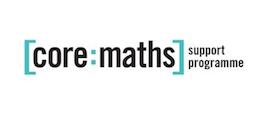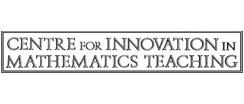Make estimates of the results of simple calculations, without using a calculator
A classic mistake made by students is to think that when asked to estimate an answer if they work it out exactly they will get more marks. This can be further compounded by students becoming programmed to think that anything done in science (and particularly in physics) wit numbers needs an equation that they plug numbers into. By seeing these calculations and their answers as a process rather than necessarily meaning anything can lead to students making calculation mistakes they do not even notice. Example might include working out the thickness of a wire at 25000m or the speed of a car at 0.0025m/s.
In the revised national curriculum (2014) there are some specific statements that require students to be familiar with ‘common values’ for quantities such as the speed of sound or walking or cycling and so their ability to be able to make estimates and have reference points is important. In Biology it is likely that they will be able to make an estimate of the size of cells and in Chemistry the size of atoms and molecules.
Science is therefore an ideal opportunity to discuss with students the purpose of estimation in real life situations. Ensure pupils appreciate that in most cases the purpose of choosing approximate values is to produce a calculation that can be done mentally. Using estimation in the context of the Science classroom gives them the opportunity to discuss the 'sense' of their answers. If pupils struggle with the mental calculation then encourage them to round a bit more.
Give or ask for some examples of where an exact number is not needed or may be impossible to determine, for example the distance travelled between two towns. Discuss why a number rounded to the nearest 10, 100 or 1 000 is sometimes enough, for example the size of a crowd at a football match.
Solutions should make sense in terms of the context and cannot be more accurate than the input data. Units should be made clear.
Fermi Estimates
A Fermi question is a problem where you cannot easily calculate the ‘correct’ or ‘right’ answer and to get an answer you need to make some assumptions and estimates. From these you can then calculate an estimate of the solution. One of the most well known ones is “How many Piano Tuners are there in London?”. This resource has a number of examples and ideas to use in lessons.
For teachers or students who develop an interest in these types of problems, as well as many available online, there are two highly recommended books.
·
Guesstimation by Lawrence Weinstein and John A. Adam
Symbol">·
What If?: Serious Scientific Answers to Absurd Hypothetical Questions by Randall Munroe. This book takes the idea to somewhat unusual situations, for example “Suppose you were to print, in 12 point text, the numeral 1 using a common cheap ink-jet printer. How many molecules of the ink would be used?” or “Is it possible to build a jetpack using downward firing machine guns?” Much of this content is also available free online https://what-if.xkcd.com/
Big and Small Numbers in the Living World
Biology makes good use of numbers both small and large. You can use these questions involving big and small number to help student explore how to estimate in real life scientific contexts. Students might need to use standard biological data not given in the question and you could adapt the questions to fit the material you are working with. One of the main aims of this resource is to help students see that these questions involve estimation there are no definitive 'correct' answers. They need to make their answers to each part as accurate as seems appropriate in the context of question.
Does This Sound About Right?
Some more useful questions to practice estimating.
Physics Factbook
An invaluable resource for teachers who might want to look up particular quantities for classroom examples or worksheets. This online reference book has pretty much any data you might want against categories. For example, if you wanted to know the running speeds of various animals you can find them all there (a cape hunting dog can run at 20m/s) or perhaps the number orchids there in are in the world (around 20,000 species). The references for the data are all included and the variation between the figures given for some data between reputable sources opens up and interesting disunion about the ‘right’ answer and how estimation is a real skill in science.
Rounding numbers
This resource looks at students' misconceptions when rounding to the nearest 1000. It illustrates how, when asked to round a value to the nearest 1000, some students mistakenly round to the nearest 10, then the nearest 100 and finally to the nearest 1000, giving an incorrect answer. It could be used to check pupils understanding and has clear teaching instructions.
Practice in rounding is provided by some follow-up exercises.
Counting Dolphins
This resource asks the question "If you were a scientist studying dolphins how might you try to estimate how many dolphins were in an ocean?"
It could be used as a class discussion before exploring sampling in field investigations and determining numbers of a particular population in an ecosystem.


